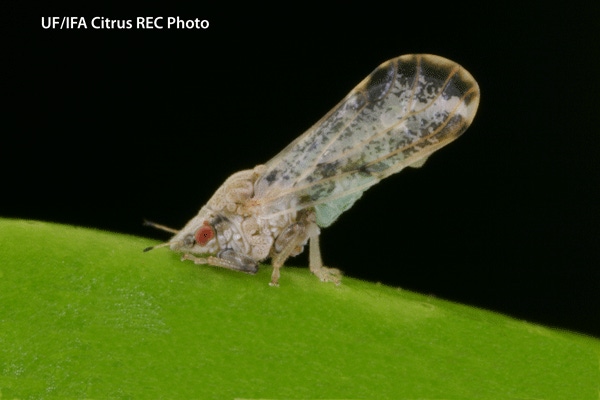
Resistance developing in psyllid that carries citrus greening disease
• Investigations to date are showing that insecticide resistance in Asian citrus psyllids is a reality• Psyllids, which are small, ant-sized insects, spread greening by feeding on trees and transmitting a bacterium that weakens and potentially kills the plant and prevents fruit from fully ripening.
May 9, 2011

In Florida’s war against citrus greening, producers face a new threat — the insects they’re fighting are becoming less sensitive to insecticides, according to a new University of Florida study.
“Our investigations to date are showing that insecticide resistance in Asian citrus psyllids is a reality,” said Lukasz Stelinski, an author of the study and an entomologist at UF’s Citrus Research and Education Center in Lake Alfred.
“Resistance is showing up,” he said. “But the levels we have documented to date are not high enough to cause product failures.”
Greening was first detected in Florida in 2005 and is a major threat to Florida’s $9 billion citrus industry. The incurable disease has wiped out citrus crops in other parts of the world.
Psyllids, which are small, ant-sized insects, spread greening by feeding on trees and transmitting a bacterium that weakens and potentially kills the plant and prevents fruit from fully ripening.
Populations of the insects become resistant to insecticides over time as susceptible individuals are killed off while naturally resistant ones manage to survive and reproduce. After a while, if the same types of insecticide are applied repeatedly and aren’t rotated often enough, the resistant psyllids begin to dominate the population.
“Currently, insecticides are our best tools for management of this insect vector of disease,” Stelinski said. “We don’t want current levels of resistance to escalate further.”
Stelinski, a member of UF’s Institute of Food and Agricultural Sciences, has monitored psyllid resistance to insecticides since 2005.
In the study, which currently appears in Pest Management Science, researchers compared mortality levels from insecticide exposure in psyllids collected from groves in 2009 and 2010 to psyllids raised in the lab in isolation to determine any changes in resistance levels.
Varying resistance levels were confirmed in psyllid populations throughout Florida’s citrus growing region.
The researchers also noted there were indications of resistance to an insecticide recently released for psyllid management, called spinetoram, intended to replace older insecticides.
Additionally, they found that psyllids are most resistant to neonicotinoids, which are important insecticides for protecting young citrus trees.
Stelinski said the study results are proof that resistance management strategies are imperative. These strategies include using different types of insecticides in a rotation, never applying the same chemical back to back and having neighboring citrus producers coordinate spraying schedules.
Despite the appearance of resistance, he said, growers have a good handle on controlling the psyllid.
“We’ve really figured out the best times of the year to apply pesticide,” Stelinski said. “Growers are working together in teams, applying pesticides to large areas simultaneously and in a coordinated fashion, which is a very effective method for controlling this insect.”
Researchers could begin to see declines in resistance levels as more effective methods of insecticide rotation are developed.
“That’s one of the things we’re researching,” Stelinski said. “There might be certain rotations that are better than others in order to not only delay, but perhaps even begin reversing levels of resistance in various populations of this insect.”
A Citrus Research and Development Foundation grant funded the research.
You May Also Like



